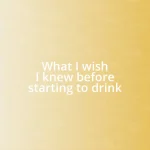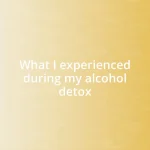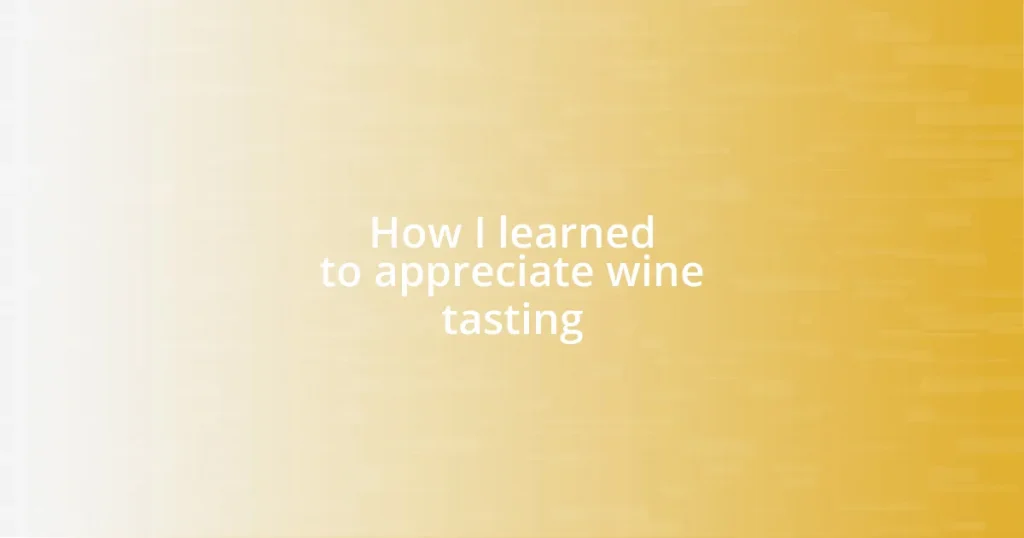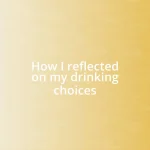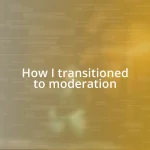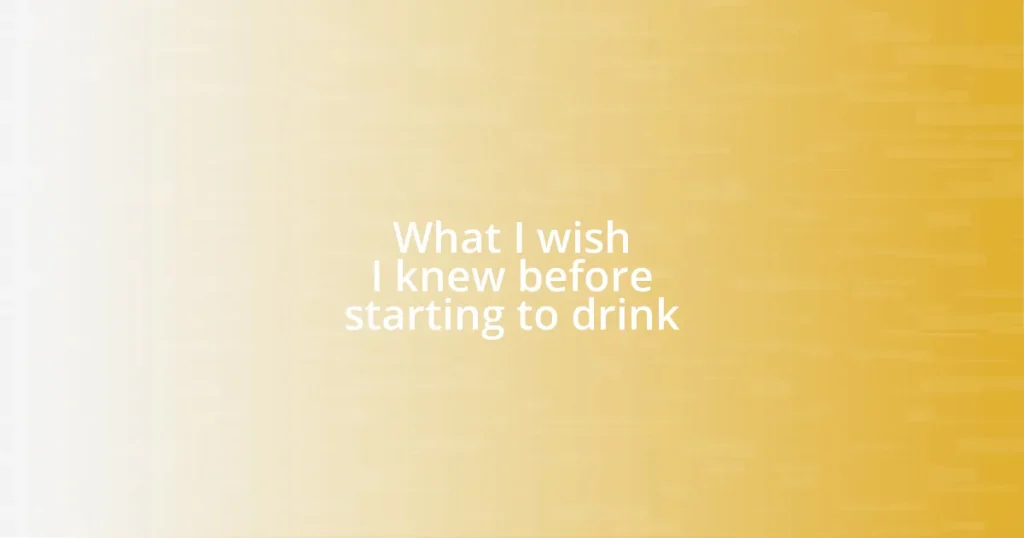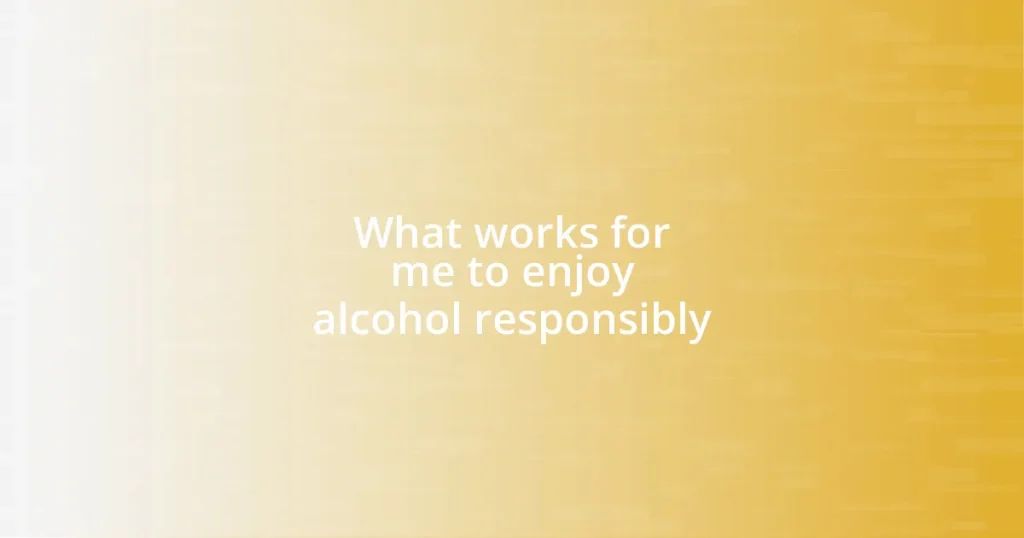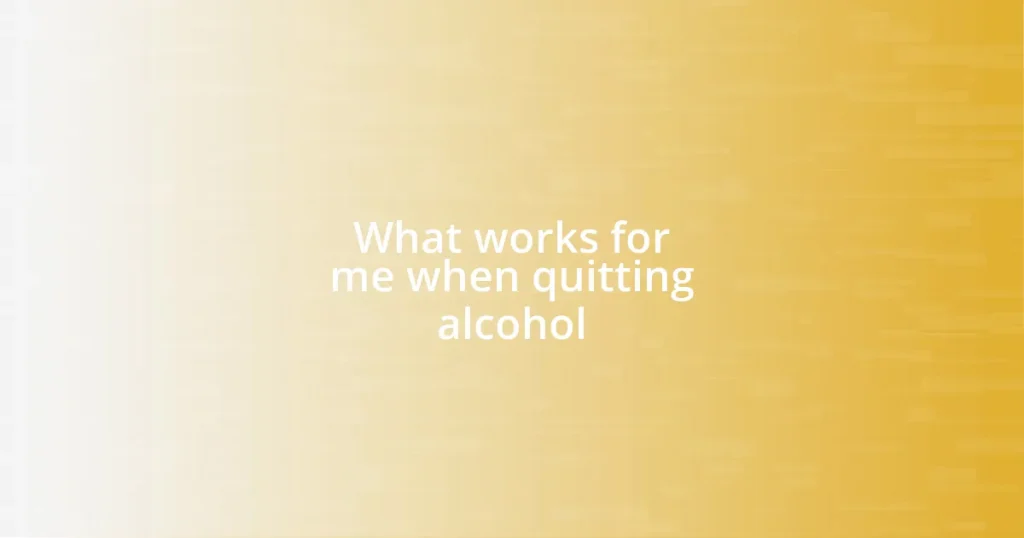Key takeaways:
- The author’s first encounter with wine sparked a lifelong passion, highlighting wine as a blend of tradition, culture, and art.
- Learning basic wine tasting techniques transformed the author’s appreciation for wine, turning it into a complex sensory experience.
- Exploring different wine varieties revealed their unique characteristics and the importance of pairing them with food for enhanced enjoyment.
- The author’s wine journey evolved into moments of connection and reflection, showcasing how wine can deepen relationships and evoke memories.
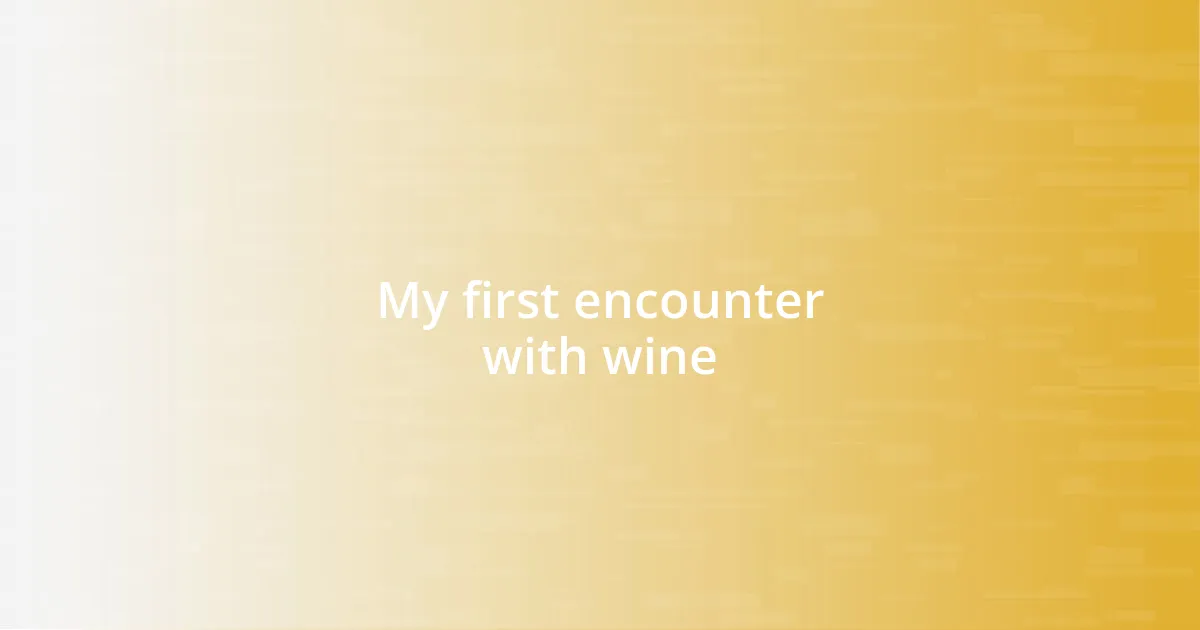
My first encounter with wine
The first time I encountered wine was at a family gathering; I still remember the excitement that bubbled in the air. I was a teenager, sneaking curious glances at the adults swirling their glasses and savoring each sip like it was a secret shared among them. What was so special about this dark liquid? My curiosity piqued my interest in something that felt grown-up and mysterious at the same time.
As I took my first tentative sip, I was hit by a mix of flavors that I couldn’t quite identify. It was kind of like tasting a burst of fruit mixed with something earthy, and in that moment, I felt an overwhelming sensation wash over me. How could something so simple evoke such complex feelings? I was hooked, yearning to explore this new world where each bottle told a story.
That encounter was like opening a door to an entirely new realm. It fascinated me to think that wine isn’t just a beverage but a blend of tradition, culture, and art. Reflecting on that day, I realize now that it was more than just a taste—it was the beginning of appreciating the deeper connections that wine can forge among people. Isn’t it incredible how a single experience can spark a lifelong passion?
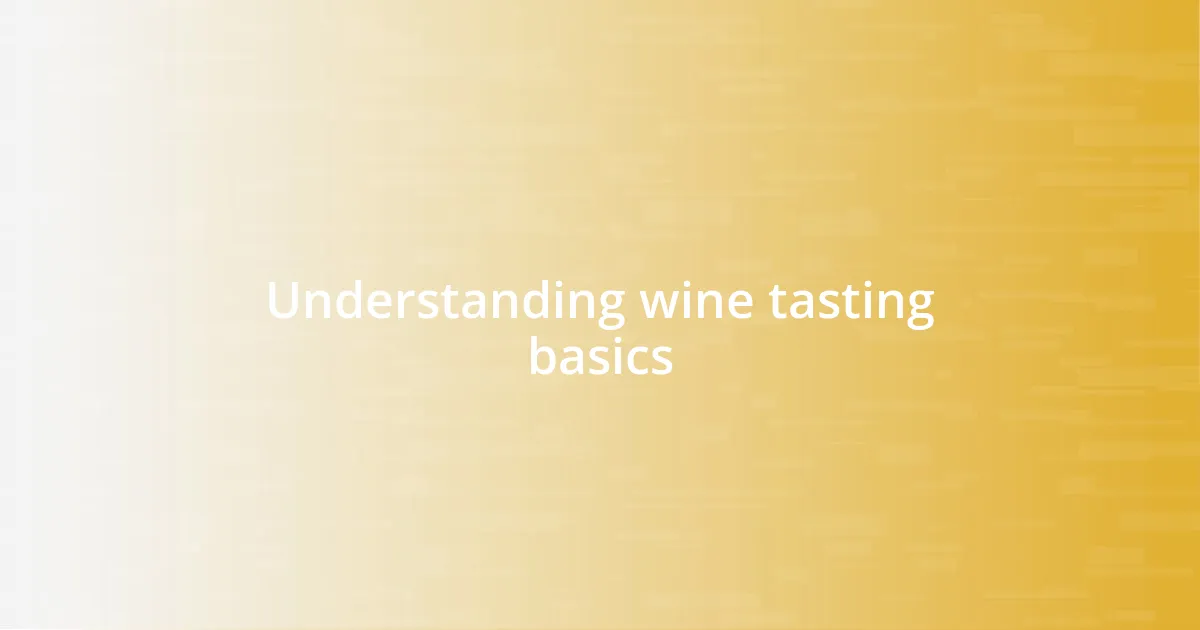
Understanding wine tasting basics
When I first dove into the world of wine tasting basics, it felt more like discovering a new language than merely learning about beverages. I recall attending my initial tasting event, where a friendly sommelier guided us through the process. The moment I learned to focus on the color, swirl the glass, and inhale the aroma, I felt like I was unlocking hidden secrets. Each aspect of the experience brought a new layer to the enjoyment, from the vivid cherry hues of a Pinot Noir to the golden sun-kissed brilliance of a Chardonnay.
To grasp the essentials of wine tasting, it helps to remember a few key components:
- Sight: Observe the color and clarity; it reveals aspects like age and grape variety.
- Smell: Swirling it releases aromas; try to identify scents like fruits, florals, or even spices.
- Taste: Take a sip and let it linger; consider the balance of sweetness, acidity, and tannins.
- Texture: Notice the mouthfeel; is it smooth, tannic, or perhaps effervescent?
- Finish: Reflect on the aftertaste; a long finish can indicate quality and complexity.
This foundational knowledge transformed my understanding of wine. I no longer viewed it merely as a drink but rather as an experience waiting to unfold with every pour.
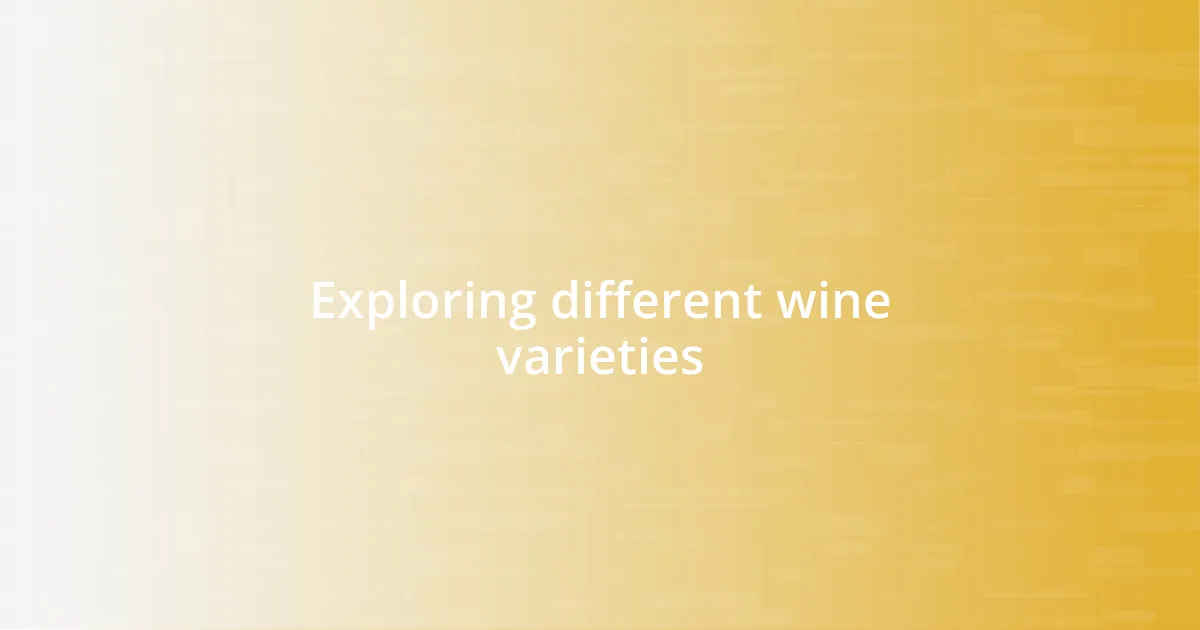
Exploring different wine varieties
Exploring various wine varieties was a delightful journey for me. I remember visiting a local vineyard, where I had the chance to sample a range of wines, each with its own distinct personality. Tasting a Cabernet Sauvignon, I was drawn in by its bold, robust flavors, while a delicate Riesling felt like a gentle caress on my palate. These experiences highlighted that wine isn’t just a drink; it’s a reflection of the land, climate, and artistry of the winemaker.
One of the most fascinating aspects of differentiating wine varieties is understanding the grapes themselves. I discovered that the mood and flavor profile could change dramatically depending on the grape type, similar to how different spices affect a dish. For instance, tasting a Zinfandel reminds me of summer barbecues with its jammy fruit and peppery kick, while a Merlot offers a smoother, softer experience that feels comforting and rich. Each sip tells a story, allowing me to appreciate the craftsmanship and cultural importance behind each variety.
As I delved deeper, I realized that pairing wine varieties with food can elevate both experiences. I once paired a crisp Sauvignon Blanc with seafood, and it was like the wine danced on my taste buds, highlighting the dish’s freshness. This taught me that exploring wine varieties is about more than just tasting; it’s about understanding how they can complement and enhance different flavors, creating a complete sensory experience.
| Wine Variety | Tasting Notes |
|---|---|
| Cabernet Sauvignon | Bold, rich, with dark fruit flavors and tannins |
| Riesling | Bright and fruity, often floral with a crisp finish |
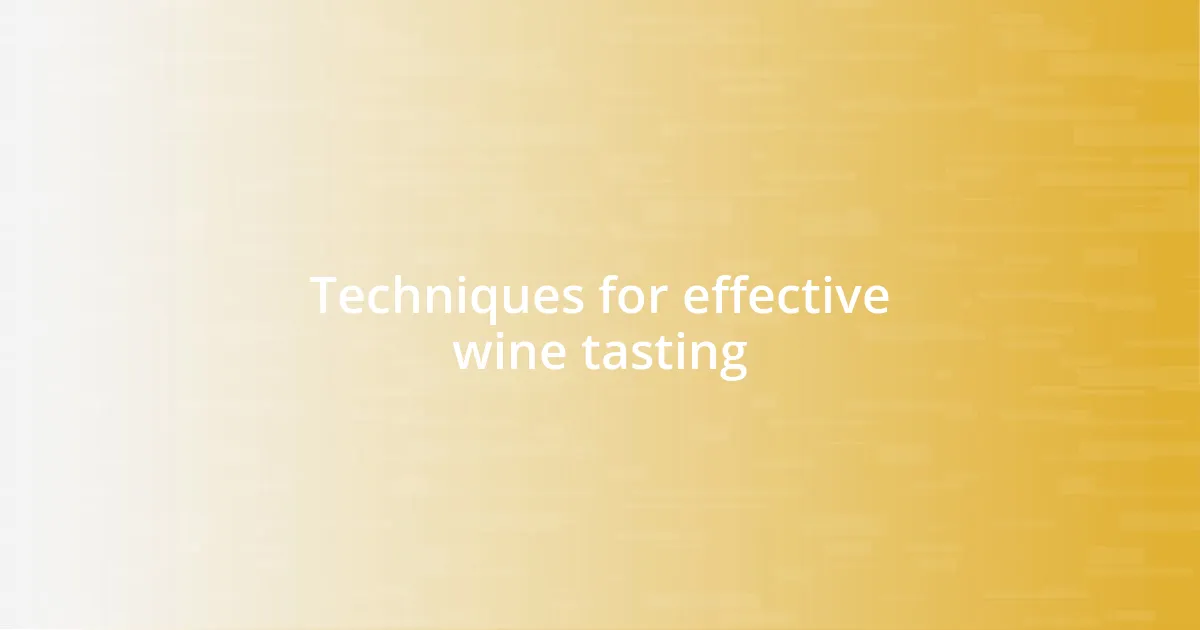
Techniques for effective wine tasting
When I attended a wine tasting class, the instructor emphasized the importance of pacing myself. It struck me how taking small sips could significantly enhance my experience. I found that letting the wine linger on my palate allowed me to appreciate the evolving flavors, much like savoring a well-cooked meal, where each bite tells its own story. Have you ever rushed through a tasting and missed those subtleties? I certainly have, and slowing down transformed my approach.
Another technique I learned involved jotting down notes during tastings. Initially, I hesitated, thinking that writing felt too academic in such a relaxed setting. But as I began to scribble my impressions—the floral notes of a Grenache or the spicy undertones of a Syrah—I realized how effective this practice was. Each time I revisited those notes, they unlocked memories and insights I’d nearly forgotten. Who wouldn’t want to capture those fleeting moments of clarity and joy?
Lastly, I discovered that comparing wines side by side could unveil remarkable insights. During a recent tasting at a friend’s home, we sampled a Malbec and a Syrah next to each other. The experience was eye-opening! Suddenly, I could pinpoint the bold, berry-driven characteristics of the Malbec against the spicier, earthier notes of the Syrah. It was like watching a painter work with different colors on the same canvas. Have you ever noticed how contrasting flavors can illuminate each other? It’s one of those delightful revelations that make wine tasting endlessly fascinating.
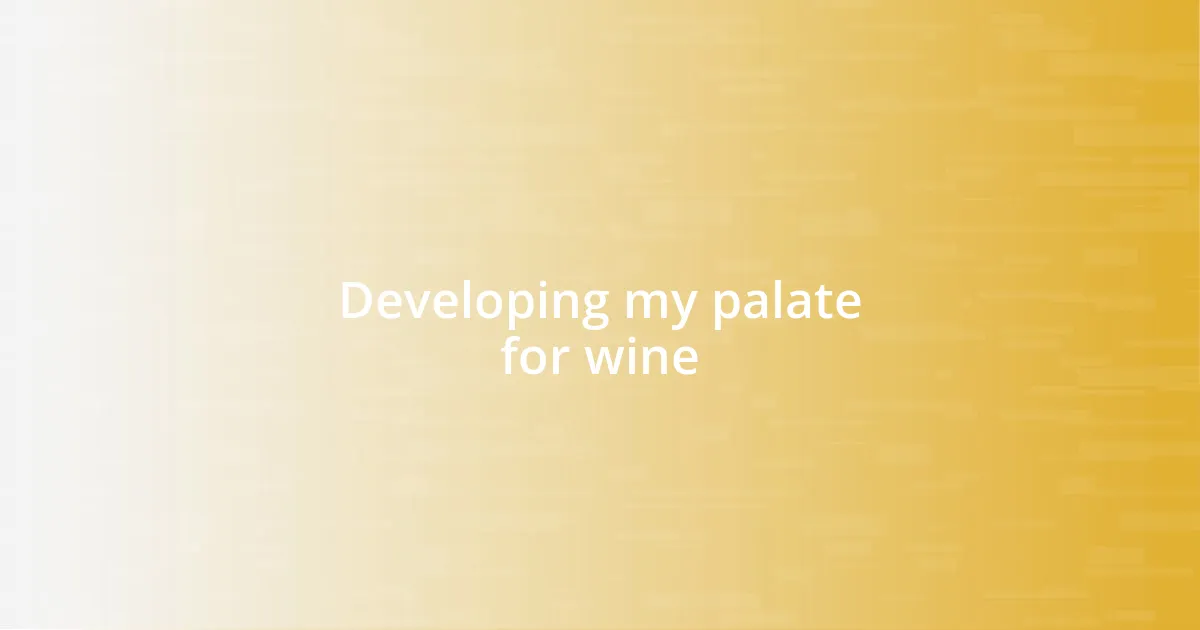
Developing my palate for wine
Developing my palate for wine felt like embarking on a personal adventure, each sip revealing new horizons. I remember one evening, sitting on my patio with a friend, we decided to explore the nuances of Chardonnay. At first, I was overwhelmed by the buttery flavors, but as I took a breath and let it linger, I could finally identify hints of green apple and a subtle oakiness. That moment made me realize that patience is key; it can be easy to rush, but true enjoyment comes from allowing the complexity to unfold.
As I continued to taste and reflect, I began to recognize how my surroundings influenced my perception of wine. One afternoon, I visited a cozy bistro where the ambient lighting and soft music created the perfect backdrop for a glass of Pinot Noir. With each sip, I felt transported; the elegant cherry notes seemed to dance in tandem with the laughter of nearby diners. This experience taught me that not only does the wine tell a story, but the environment also plays an integral role in how we appreciate it. Have you ever noticed how certain wines invoke specific memories or emotions? It’s as if they hold a mirror to our experiences.
With time, I noticed my preferences evolving, leaning more towards wines with interesting textures and depths, like a spicy Grenache or a complex Gewürztraminer. There was a time when I would have chosen a straightforward Merlot without a second thought, but I found myself fascinated by the spice and vibrancy of the Grenache instead. It was as if my senses were awakening, urging me to explore beyond my comfort zone. This journey has not only refined my palate but enriched my appreciation of life’s subtleties. Isn’t it empowering to discover new favorites and understand the profound connection between flavor and experience?
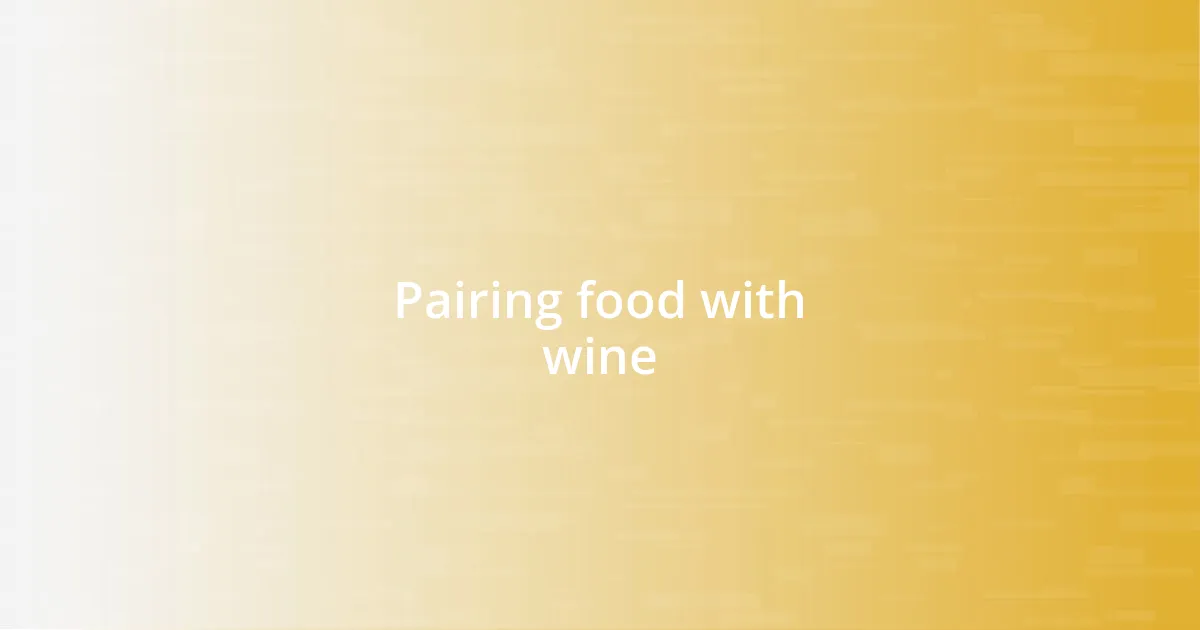
Pairing food with wine
Pairing food and wine can feel like a match made in heaven. I remember attending a dinner party where we paired a bold Cabernet Sauvignon with a juicy steak. The richness of the wine cut through the meat’s savory flavors perfectly, transforming each mouthful into a harmony of taste. Have you experienced that magical moment when the right wine elevates a meal? For me, it was absolute bliss.
One evening, I decided to experiment with a new pairing: a zesty Sauvignon Blanc alongside a fresh Mediterranean salad. The acidity of the wine balanced the vibrant flavors of the tomatoes and feta cheese, creating a refreshing burst on my palate. It was a delightful revelation! As I sipped, I realized that food and wine are like dance partners, each enhancing the other’s strengths. It’s fascinating how such combinations can evoke memories or transport you to different places through taste alone.
Sometimes, I find that unconventional pairings can yield the most surprising results. During a casual gathering with friends, we shared a sweet Riesling with spicy Thai curry. The wine’s sweetness beautifully tamed the heat of the dish, showcasing how opposites can complement each other. Have you ever paired an unexpected wine with a dish and discovered a new favorite? That exploration is part of the joy in wine tasting—every meal becomes an opportunity to discover something extraordinary.
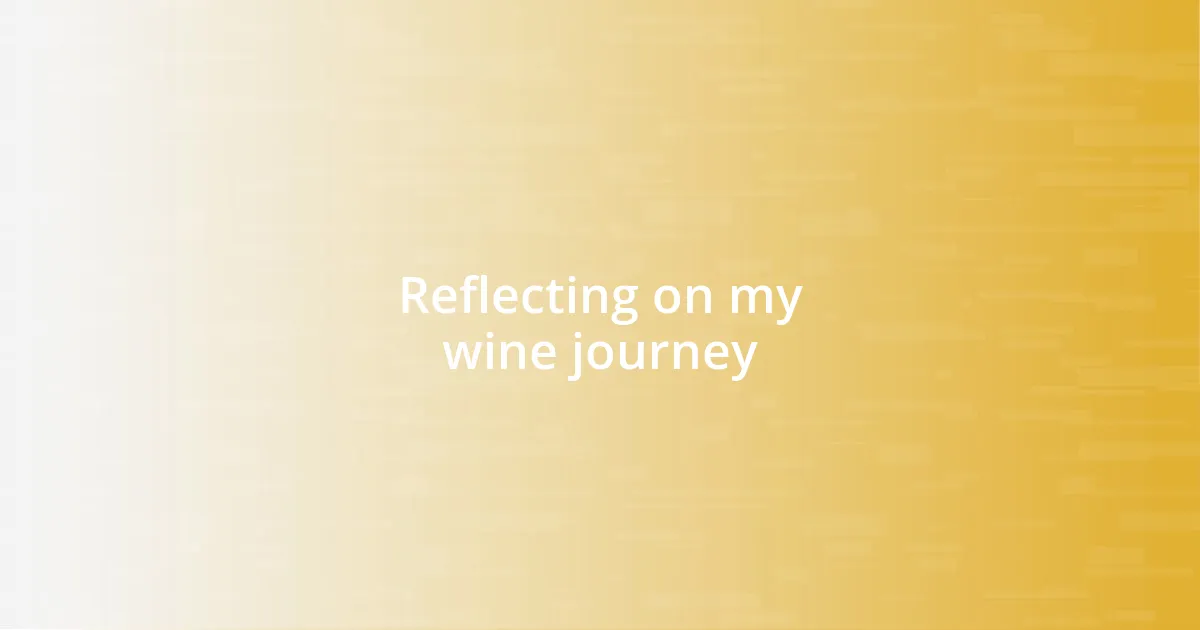
Reflecting on my wine journey
Reflecting on my wine journey has been like retracing steps through a vibrant landscape of flavor and experience. Every bottle I opened had its own story to tell, often evoking deep-seated memories or transforming a regular evening into something extraordinary. I remember one brisk autumn evening, swirling a glass of Syrah while listening to the rain dance on the roof. That simple act made me realize that wine had become a companion—one that could amplify joy or soothe stress.
There have been moments when a sip of wine caught me off guard, prompting me to pause and truly savor what was in my glass. I distinctly recall sitting on a sunlit terrace, enjoying a crisp Rosé while sharing laughter with friends. The laughter, warmth, and that refreshing wine created a tapestry of connection that felt almost sacred. Have you ever found that a particular wine has the power not just to enhance a meal, but to deepen friendships and create lasting memories? I certainly have.
Looking back, I appreciate how my understanding of wine has evolved from mere curiosity to a profound love for the complexities it offers. Each tasting experience has not only broadened my palate but also expanded my appreciation for the cultures and stories behind each bottle. I often ponder this wonderful journey and its reflections on my personal growth—how can something so simple as tasting wine lead to moments of introspection and connection? It’s a beautiful reminder that sometimes, it’s the little things in life that can leave the biggest impact.
